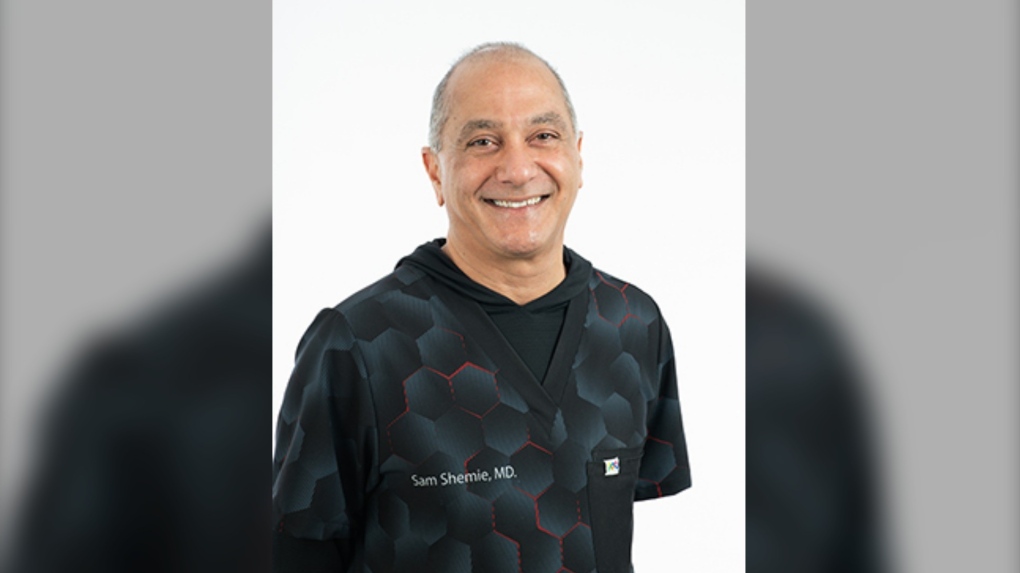New Canadian guidelines to define death based on the brain
For many families, learning a loved one has died is an excruciating and often incomprehensible moment.
Joanne Brennan's daughter, Kathleen, was 23 years old when she set off on a solo trip to Europe in 2017. Kathleen sustained fatal injuries after falling from a cliff.
"She spent one week in Poland, and then she transferred to Dubrovnik, Croatia, and on her second day there, we didn't hear from her," said Joanne in an interview with CTV News.
Her daughter spent several weeks on life support and was considered brain-dead before being airlifted to Canada, where she eventually died.
In Canada, the clinical definition of death hadn't been updated since 2006 and could vary from province to province. It differs around the world.
"We had two concepts of death, one was your heart stops beating — cardiac death — and two, your brain stops working, the so-called brain death," said Dr. Sam Shemie, an associate investigator with the Research Institute of the McGill University Health Centre (RI-MUHC).
He led the work with the Montreal Children's Hospital to update the Canadian guidelines on how to define death. This time, it's solely based on the brain.
 Dr. Sam Shemie, an associate investigator with the Research Institute of the McGill University Health Centre. (Source: rimuhc.ca)
Dr. Sam Shemie, an associate investigator with the Research Institute of the McGill University Health Centre. (Source: rimuhc.ca)
The MUHC said the new definition describes death as "the permanent cessation of brain function, observable by the absence of consciousness and brainstem reflexes, including the ability to breathe independently" and applies to all people in all circumstances.
"The brain is really the most unforgiving of organs that doesn’t heal well if it’s been injured," Shemie said in an interview.
"And so all our outcomes are really to try to restart brain function, not just to restart heart and lung function."
While CPR works to restart the heart and lungs, it's really about restoring blood flow and oxygen delivery to the brain.
"The brain is what makes us human. The ability to be conscious, to interact with the environment, to see, feel, look, hear, have memories, have interactions, all those can be completely and permanently gone, yet you have a body that’s still functioning because of the body support machinery that we use," Shemie said.
He said the guidelines provide clarity for medical professionals and help them counsel families.
Even for Joanne, who is a nurse, being told her daughter had died was confusing.
"Patients are supported on life support, so you can see their chests rise and fall. I was no longer a nurse at that point, I was a mother," she said.
"So, all my skills went out the window, and you're still hoping miracles could happen and Kathleen would walk out with us and come home."
A panel of 60 people contributed to the project, from medical professionals to ethicists and even patient families. Among them was Joanne, who said she sees the guidelines as a way to bring meaning to Kathleen's death.
"She was fun-loving, adventurous, loved to travel," she said through tears. "I miss our date nights, I miss seeing her, her voice, her laughter."
She said she hopes the new guidelines will help other families through their darkest hour.
CTVNews.ca Top Stories

Trudeau calls violence in Montreal 'appalling' as NATO protest continues
Anti-NATO protesters gathered again in Montreal on Saturday to demand Canada withdraw from the alliance, a day after a demonstration organized by different groups resulted in arrests, burned cars and shattered windows.
7 suspects, including 13-year-old, charged following 'violent' home invasion north of Toronto
Seven teenage suspects, including a 13-year-old, have been arrested following a targeted and “violent” home invasion in Vaughan on Friday, police say.
These vascular risks are strongly associated with severe stroke, researchers say
Many risk factors can lead to a stroke, but the magnitude of risk from some of these conditions or behaviours may have a stronger association with severe stroke compared with mild stroke, according to a new study.
Widow of Chinese businessman who was executed for murder can sell her Vancouver house, court rules
A murder in China and a civil lawsuit in B.C. have been preventing the sale of multiple Vancouver homes, but one of them could soon hit the market after a court ruling.
Cher 'shocked' to discover her legal name when she applied to change it
Cher recalls a curious interlude from her rich and many-chaptered history in her new book 'Cher: The Memoir, Part One.'
Black bear killed in self-defence after attack on dog-walker in Maple Ridge, B.C.
A black bear has died following a brawl with a man on a trail in Maple Ridge, B.C.
Retiring? Here's how to switch from saving for your golden years to spending
The last paycheque from a decades-long career arrives next Friday and the nest egg you built during those working years will now turn into a main source of income. It can be a jarring switch from saving for retirement to spending in retirement.
Canadian neurosurgeons seek six patients for Musk's Neuralink brain study
Canadian neurosurgeons in partnership with Elon Musk's Neuralink have regulatory approval to recruit six patients with paralysis willing to have a thousand electrode contacts in their brains.
Police thought this gnome looked out of place. Then they tested it for drugs
During a recent narcotics investigation, Dutch police said they found a garden gnome made of approximately two kilograms of MDMA.

































